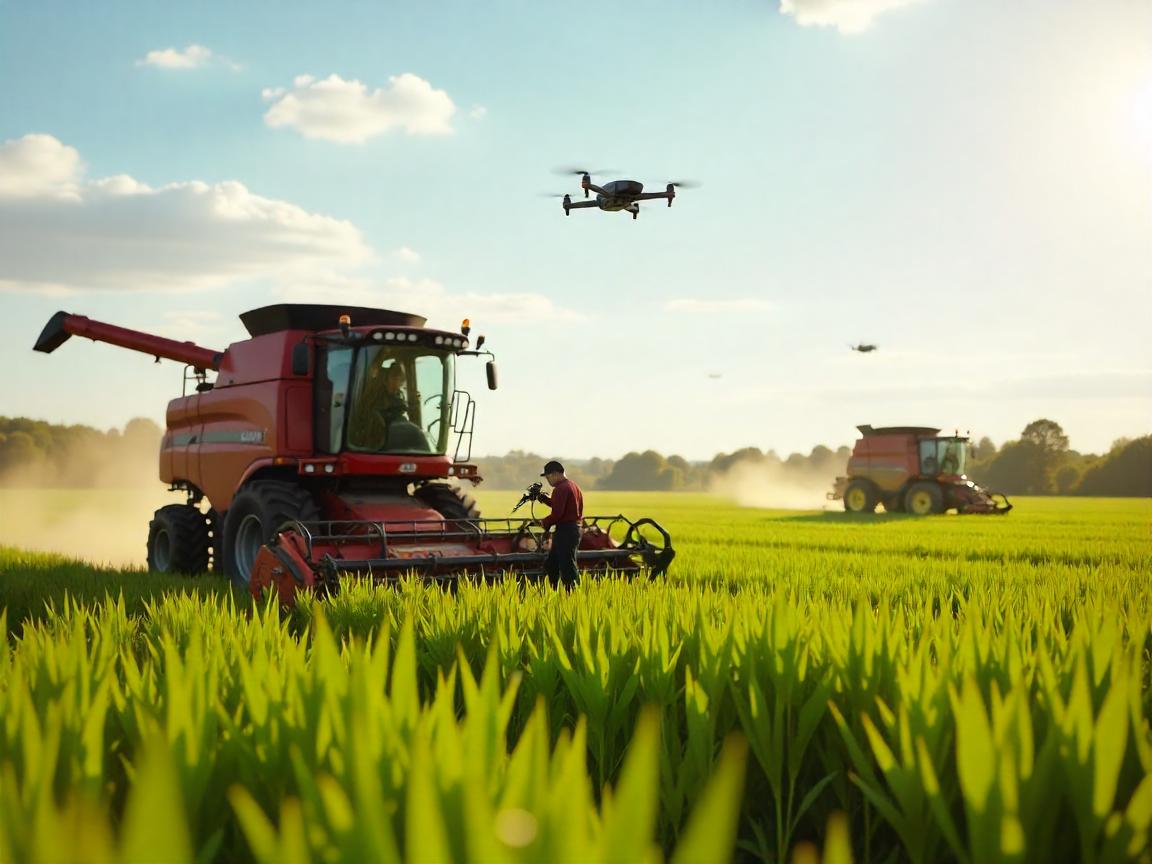
The New Face of Farming
Imagine a situation where seeds are planted using robots, drones watch the crops from above to help decide when they are ready for harvesting and produce is harvested by robots—with nobody needing to be there to help. This isn’t just something out of a science fiction story; this is how agriculture is done today. Due to a rise in world food demand and fewer workers, robotics is having a big impact on how farming is done.
Automated Harvesting Ensures Both Saving Time and Accuracy
Using generic harvesting methods takes a lot of time and physical effort. Automated harvesters, such as the Fendt Xaver robot swarm, now plant seeds so accurately that they avoid over-compacting the soil and boost efficiency. Similarly, Octinion’s Rubion robot deals with strawberries with care, making sure there is the least bruising and strawberries are suitably ripe. They resolve issues from a workforce shortage and also ensure the fruits and vegetables are consistent and top quality.
Precision Farming: Smarter Resource Management
Farmers use precision agriculture technology to improve resource use and increase crop yields. Building on autonomous technology developed by Naïo Technologies, the Oz robot weeds fields using RTK GPS instructions, so farmers can farm with less chemicals and fewer workers. Through computer vision, See & Spray from Blue River Tech finds and sprays herbicide directly onto weeds, making the herbicide spray much more efficient. Farmers are able to use insights from these tools to work more sustainably and ensure their farming business thrives.
Applying Ideas in the Real World: Case Studies About Innovation
- John Deere’s 8R tractor uses artificial intelligence and two cameras to guide itself throughout a field and handles tasks like plowing and seeding mostly on its own.
- The UK’s Small Robot Company created Dick, a robot that removes weeds safely and environmentally by using electric pulses.
- Using the Carry robot from Future Acres, workers can load and deliver their hand-picked crops hands-free and with greater efficiency in their field.
How the company affects the global market and what makes it successful
This market for agricultural robotics is projecting rapid development, with an estimate of $26.35 billion by 2032, more than double its size in 2025. The surge is happening due to requirements for greener farming, a lack of workers and a desire to work more efficiently. Robots are making a difference in both big and small farm operations around the world.
Leading Experts Say: Growing With the Robotic Revolution
Carla Mendosa, a roboticist at UC Davis, points out that robotics can help farmers by collaborating with them.
Robotics serves to upgrade the skills and work of farmers. It supports the team by offering more time for planning and maintaining the property, instead of simple chores.
She points out the way that modern agriculture depends on technology and human skills working together.
Problems and Important Things to Think About
Although agricultural robotics offers many advantages, using it brings its own set of challenges. Though widespread implementation would be beneficial, initial expenses, necessary training and data privacy problems block its way. Nevertheless, services such as leasing and making technologies easier to manage are now available, so farmers of any scale can benefit from them.
Conclusion: Cultivating a Sustainable Future
Adding robotics to farming brings about a transformation that leads to more sustainable, productive and strong farming. Through these technologies, we can deal with the important problems of food security and protecting nature. We are on the edge of a robotics-led revolution in agriculture, so the main question is not if robots have a place, but how soon we can move ahead with their use.
